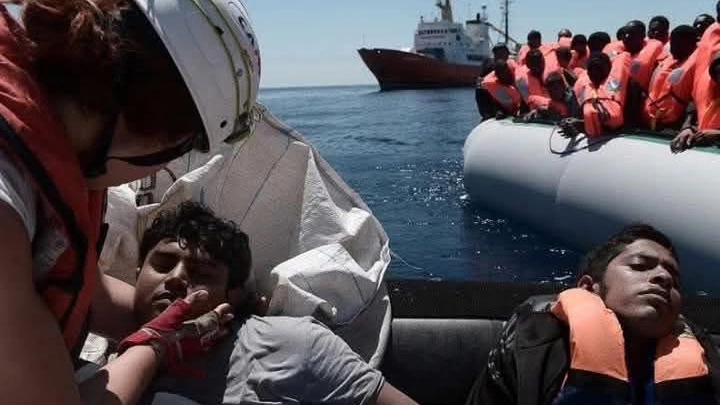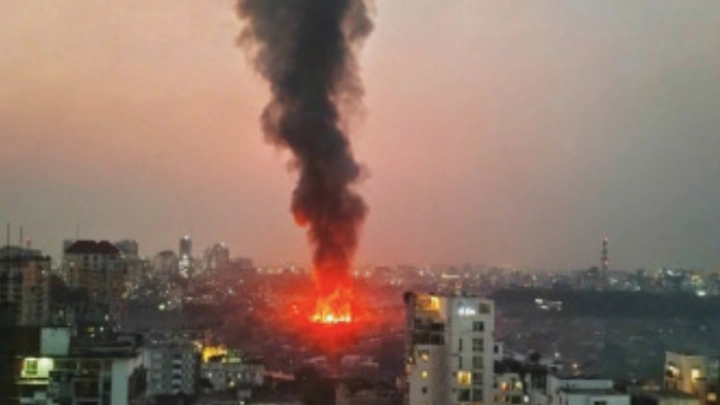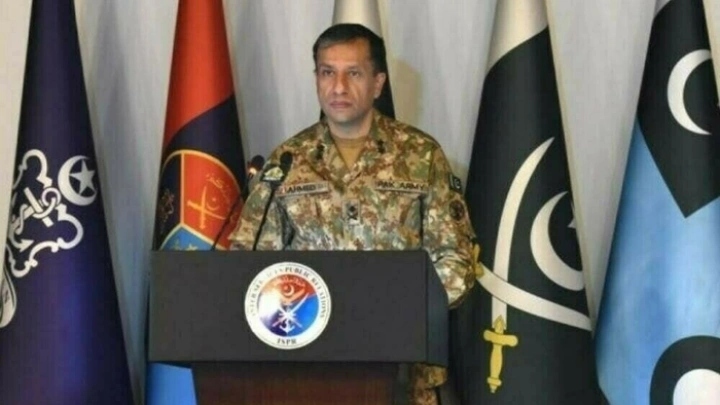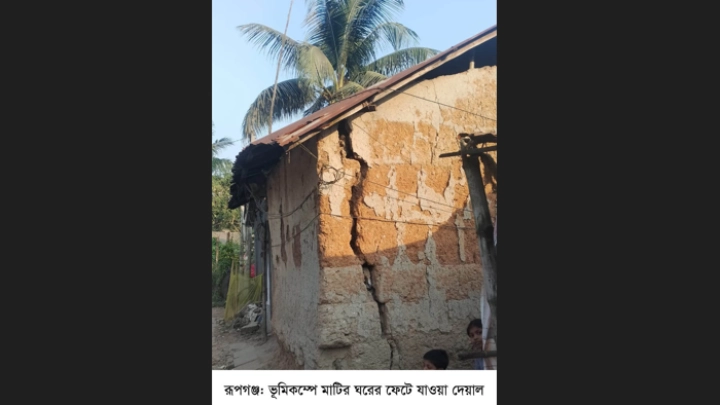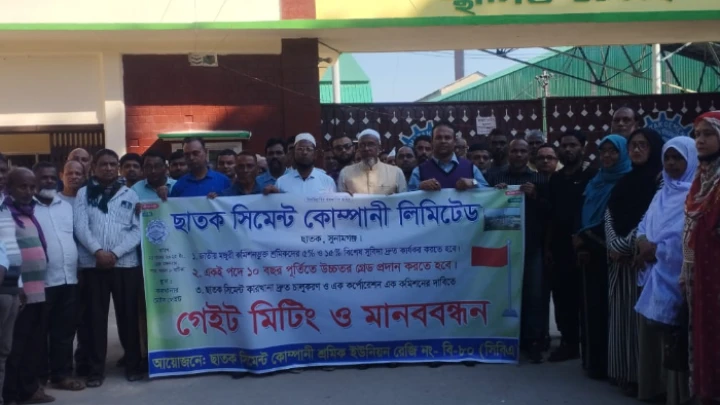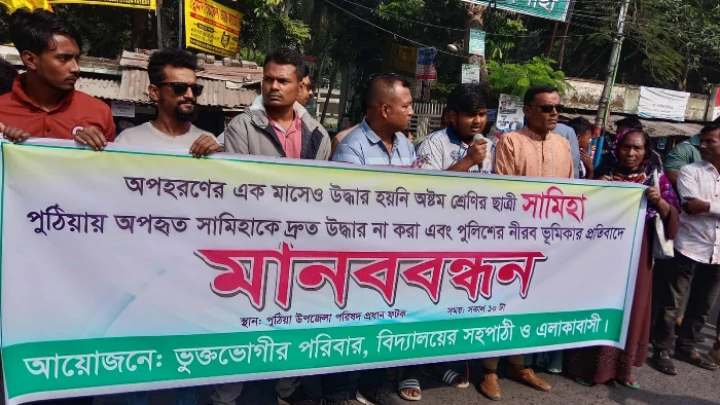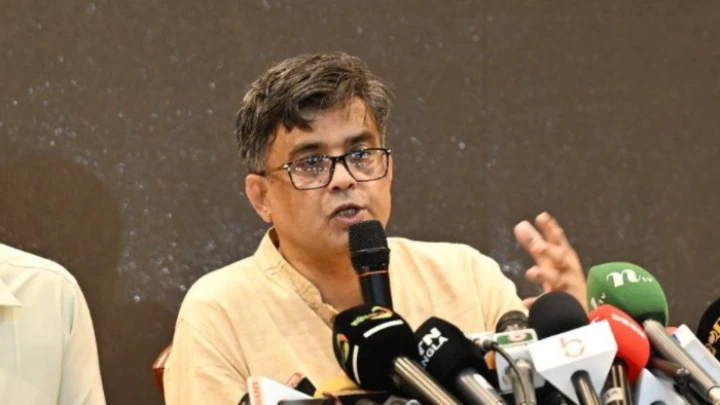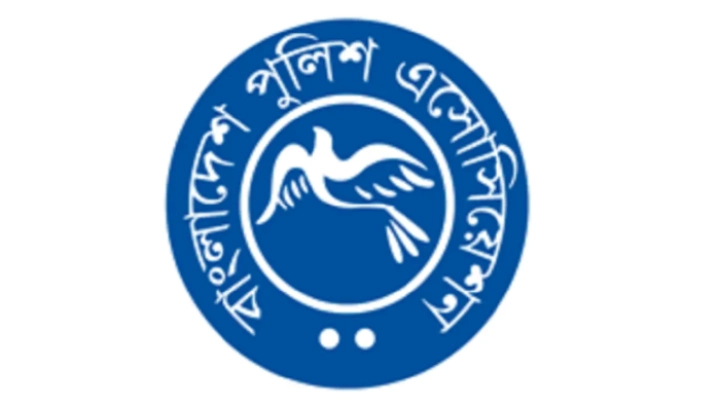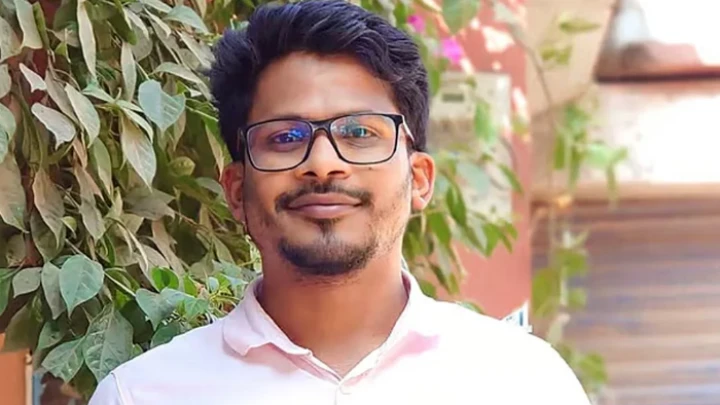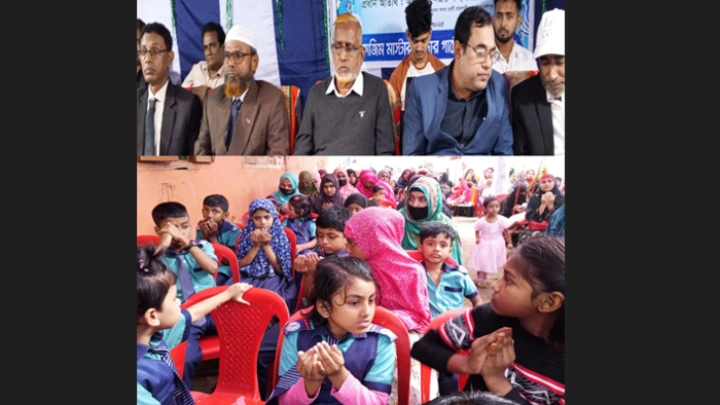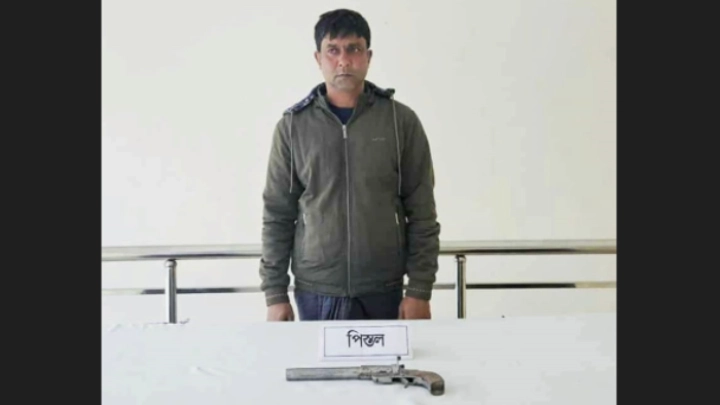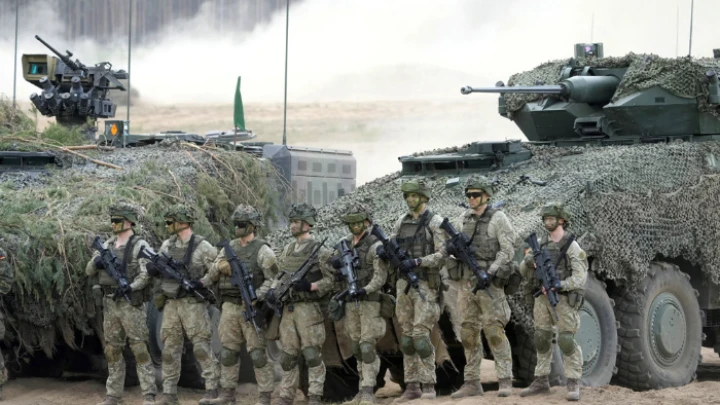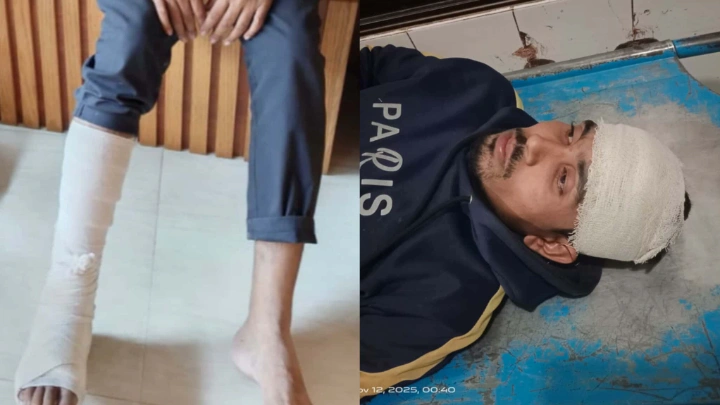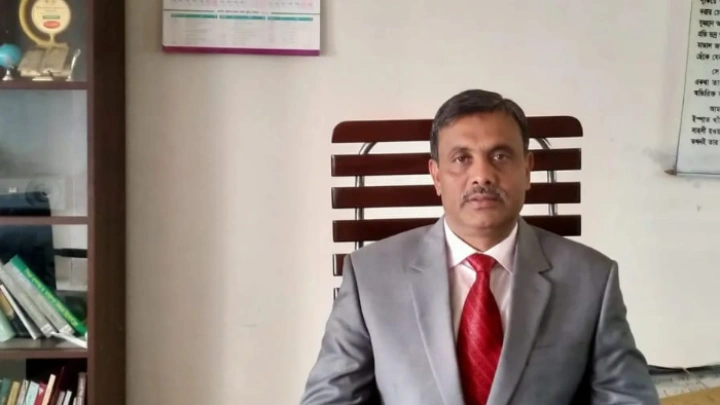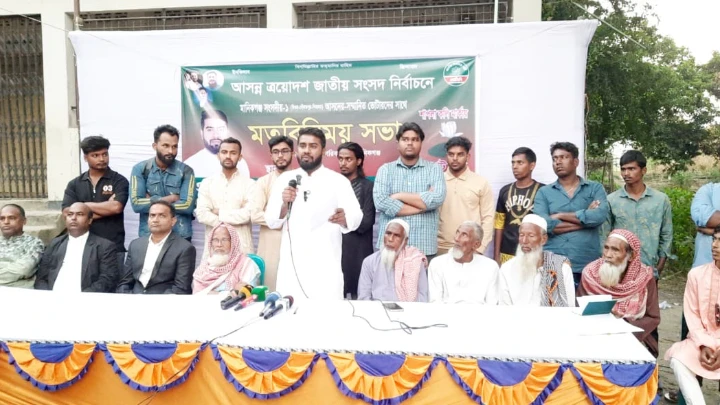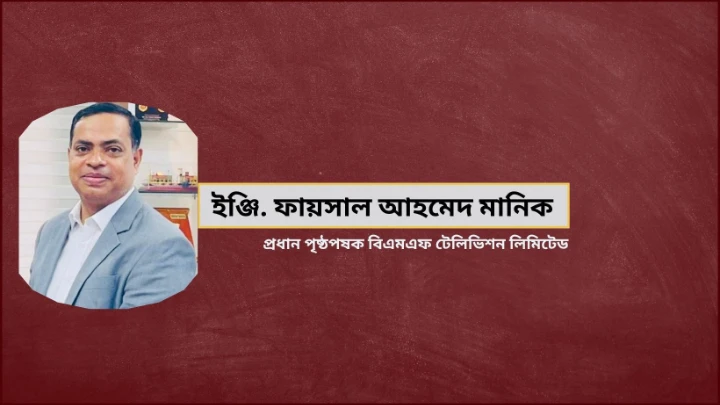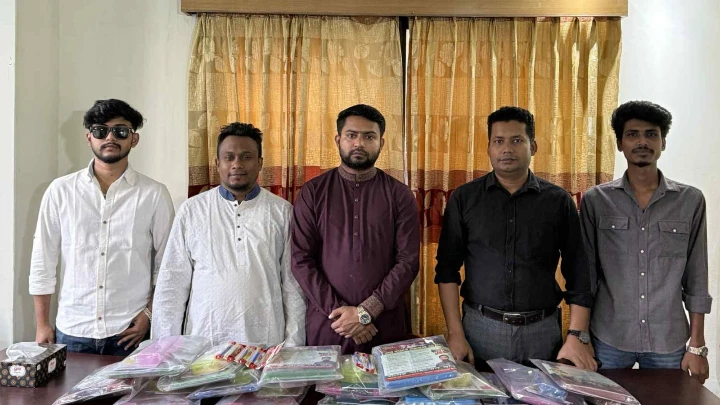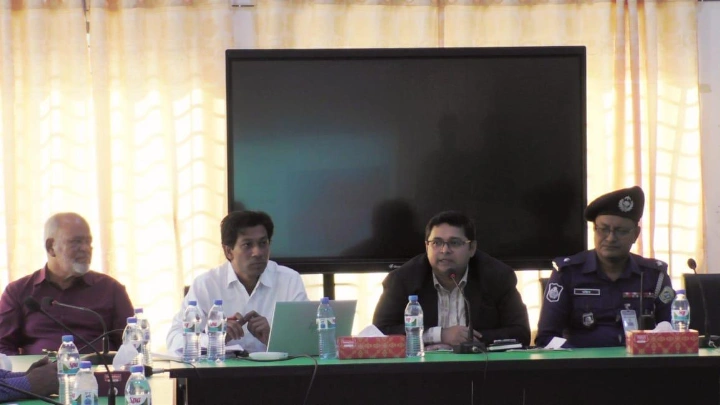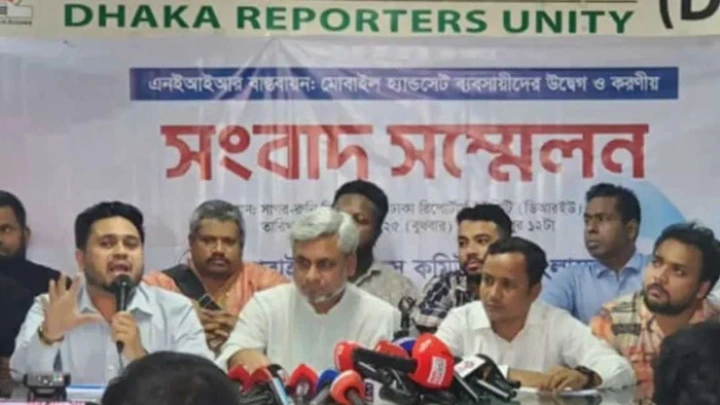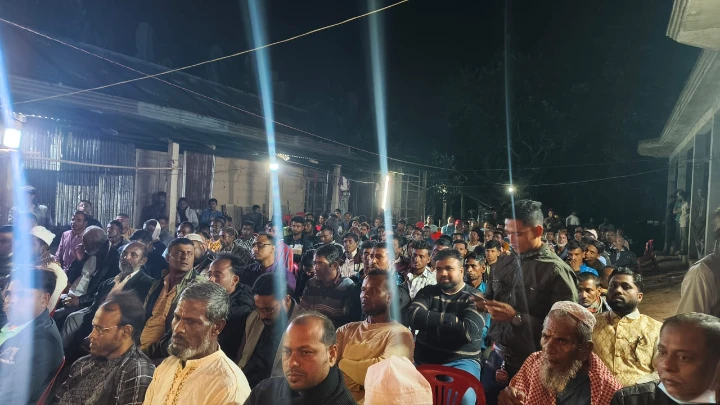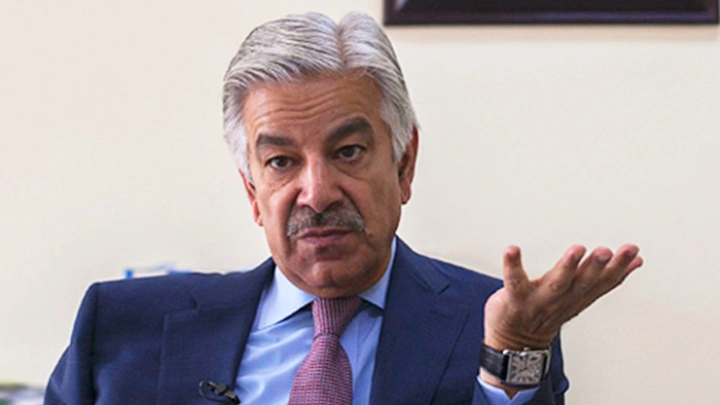Constantly venturing into this life-and-death struggle, many are left destitute while others are submerged in the sea.
From Libya to Italy: Bangladeshi Migrants on the Edge of Life and Death
Jahurul Islam || বিএমএফ টেলিভিশন
Thousands of Bangladeshi migrants are risking their lives by traveling through Libya to reach Italy. In pursuit of a better future, many endure perilous journeys across the sea, facing extreme hardships and uncertainty. While some manage to survive, countless others fall victim to the treacherous routes, losing their belongings, their livelihoods, and in tragic cases, their lives. This migration reflects both the desperation and resilience of people seeking safety and opportunity abroad.
Thousands of people from Bangladesh leave the country every day in search of a better life. Primarily, unemployment, social uncertainty, political violence, and lack of economic opportunities push them to take enormous risks abroad. The journey, especially through Libya to reach Italy, is extremely dangerous because it is mostly illegal, uncontrolled, and unplanned.
On this route, people become pawns of human traffickers and enter the most perilous part of their lives. Long waits on the shores, lack of life-saving equipment, and countless deceptive tactics of trafficking networks result in many becoming destitute or even drowning in the sea.
People leave not only for economic reasons but also due to political violence, threats, and fabricated legal cases. Families of those who stay abroad for long periods also face helplessness; some return to the country only to become victims of false accusations, including murder attempt cases, or are listed as defendants while still abroad.
In this article, we will use real case studies, interviews, and statistical data to analyze the human aspects, dangers, and societal impacts of this perilous journey.
Real Case Studies and Humanitarian Analysis-
One of the greatest dangers for Bangladeshis traveling to Italy is the route through Libya. Along this path, human lives are constantly at risk. Most first-time travelers move without proper planning, making them vulnerable to human trafficking networks.
Case Study 1:
Mohammad Riyad, 30, a resident of Khulna district, decided to travel to Italy via Libya to provide a better life for his family. In November 2024, he paid 500 euros to a local “convenient travel agency” and embarked on the journey.
Upon reaching Libya, he was not only held captive but also subjected to extreme deprivation, lacking food, water, and safe shelter. Over three months of captivity, three of the twenty people traveling with him died. Eventually, he and others were put on a small boat bound for Italy.
Case Study 2:
Hasan, 25, from Narshingdi district, also chose the sea route to reach Italy. During his journey, the boat faced rising water levels within twelve hours, leading to a capsizing. Ten passengers were lost at sea. Hasan survived, but his closest friend died.
Humanitarian Analysis:
These cases clearly show that every journey involves life-threatening risks. Beyond physical death, travelers endure profound psychological and emotional trauma. Families waiting at home live in constant fear. The travelers face disorganization and insecurity throughout their journey.
Through human trafficking networks, people become destitute. Even after paying money, in many cases, they do not receive proper food, medicine, or safe shelter. They lose not only their lives but also their dignity.
Statistics indicate that thousands of Bangladeshis take this route each year. Approximately 20–30% of them either perish or go missing at sea. The mortality rate is highest during the passage through Libya.
Human Reality and Risky Journeys-
Every day, thousands of people from Bangladesh are traveling to Libya and onward to Italy or other European countries, taking life-threatening risks. These journeys are mostly not through visas or legal channels; rather, they rely on human trafficking networks. Travelers are often unaware of when storms at sea, the fragile condition of boats, or criminal gangs might endanger their lives.
Each year, hundreds of people die due to boat sinking incidents at sea. For example, statistics from 2023 show that over 500 Bangladeshi migrants went missing or died in the Mediterranean Sea in just three months.
Some people are fleeing limited economic opportunities in villages or towns. They have no alternatives. Livelihood and providing for their families are the main reasons behind taking such a perilous decision.
From the interview of a migrant:
“There is no work in my village. I took this risk to provide food and sustenance for my children. I am constantly anxious about the dangers of the sea, but there is no other way.”
With hopes for a better future, these people cross the sea. However, they do not know if they will ever return to see their families again. Many are left destitute, some drown, and others become victims of detention or human trafficking.
Human Analysis and Life Risks-
In the migration journey from Bangladesh, every individual leaves behind their family, friends, and the safety of their village. This journey is not merely for economic reasons; it is a life-long struggle where life and dignity are constantly at risk.
Before setting out on the sea route, migrants experience a mix of psychological pressure, anxiety, and hope. Many are aware of the life-threatening dangers and the risk of death, yet they move forward, driven by the hope of providing financial support and security to their families.
Family Impact-
In a case study, a 24-year-old man, Riaz, from a village, started his journey from Bangladesh via Libya to Italy to send money and support to his wife and two young children. Riaz stated:
“I know this path is dangerous. Many have died, and many are missing. But there is no other way for my family. If I return safely, my wife and children will be happy.”
The psychological pressure on the family is immense. Wives and children live with constant fear, anxiety, and distress, especially when they follow news reports of deaths or disappearances, impacting their mental health severely.
Sea Deaths and Missing Statistics-
According to statistics after 2023, over a three-month period, more than 500 Bangladeshi migrants went missing or died in the Mediterranean Sea. Many were victims of shipwrecks, while others fell into the traps of human trafficking networks.
Humanitarian Analysis-
This situation points to a lack of safe migration channels and equal opportunities, forcing people to take perilous routes. From a humanitarian perspective, these lives are not merely individual; they are connected to the future and survival of families and communities.
Humanitarianly, behind each tragic incident lies a person’s dreams, hopes, and sense of responsibility toward their family. This reality reminds us that each death or disappearance is not just a statistic; it represents a family, a future, and a lost life.
Solutions & International Perspective-
The issue of dangerous migration from Bangladesh cannot be solved solely through domestic efforts. It is an international problem that requires safe migration channels, human trafficking prevention, and coordinated policies.
1. Safe Migration Systems:
The government, together with international organizations such as IOM (International Organization for Migration) and the European Union, must work collaboratively to provide citizens with legal and safe migration options. This will reduce the risk of travelers falling prey to dangerous sea routes or human trafficking networks.
2. Strict Laws Against Human Trafficking-
Ensuring punishment for human traffickers is crucial. Local police, coast guards, and international joint task forces can conduct operations against organized trafficking networks. Regular monitoring and legal measures will help secure the safety of migrants.
3. Awareness Raising-
Rural communities need to be made aware of the risks of illegal migration. Workshops, training programs, and campaigns through schools, colleges, and community centers can educate people about the dangers.
4. Economic Alternatives & Local Employment-
Many people migrate because local employment opportunities are limited. The government and private sector should work together to create new job opportunities. By developing agriculture, small enterprises, and local industries, internal alternatives can be provided.
5. International Cooperation-
Bangladesh must engage in more effective agreements with countries such as Italy, Libya, Malta, and Greece to ensure assistance with legal migration, life safety, and protection of labor rights.
Humanitarian Analysis:
Each migrant family lives amid uncertainty, despair, and risk. Children, women, and the elderly are most vulnerable. Only when international policies, local initiatives, and awareness are combined effectively can this dangerous migration process be controlled.
Case Studies and Interviews-
The journey of thousands of Bangladeshis from Bangladesh through Libya to Italy represents a real humanitarian crisis. Here, we analyze this issue through several real-life case studies and direct interviews.
Case Study 1: Rashedul Haque, 26, Patuakhali-
Rashedul Haque decided to migrate at a young age to support his family financially. He shared:
“Initially, we boarded a boat to cross the sea. At sea, fear of the boat sinking, lack of food and water—these constantly tore at us. Among my four friends, one has already been lost to the sea.”
Rashedul describes the sea journey as terrifying: overcrowded boats and unsafe conditions create extreme physical and mental stress for passengers.
Case Study 2: Mahmudul Hossain, 32, Sylhet-
Mahmudul decided to travel illegally to Italy to support his family.
“I am the only earning member of my family. At sea, we face death every moment. Many have already been lost, yet we have no way to return.”
He further mentions that human traffickers manipulate and coerce people to board boats with false promises. During the journey, lack of food and water, rough waves, and extreme temperatures turn life into an uncertain struggle.
Case Study 3: Afranur Rashid, 19, Jessore-
Afranur recounts his experiences after reaching Italy:
We reached Libya, but there we were detained in a camp. We had to pay fees, suffered physical abuse, and many people became sick or died.
According to Afranur, human trafficking networks subject vulnerable people, including women and children, to both physical and mental abuse in refugee camps.
Humanitarian Analysis-
1. Insecurity and Death: Sea routes pose a constant risk of death. Statistics from 2024 indicate that 10,000–15,000 Bangladeshis attempted the journey to Italy, with at least 500 reported missing or dead at sea.
2. Psychological Stress: Prolonged exposure to dangerous and unsanitary conditions causes severe mental stress. Many migrants develop depression and anxiety.
3. Family and Social Pressure: Financial pressure on families compels individuals to take these hazardous journeys. Many migrants are the sole breadwinners and take life-threatening risks to support their families.
4. Human Trafficking and Abuse: Refugee camps in Libya involve ongoing physical and mental abuse of children, women, and vulnerable individuals.
Maritime Risks and Statistics-
The sea route from Bangladesh to Italy is the most dangerous and life-threatening stage of migration. Thousands of people risk their lives on this route, where the likelihood of death, disappearance, and physical–psychological abuse is extremely high.
Major Maritime Risks-
1. Overcrowded and unsafe boats:
Small internal boats often carry more than 30–50 passengers. Overloaded vessels frequently capsize even in small waves.
2. Lack of food and water:
For several days or even weeks at sea, travelers often suffer from severe dehydration and malnutrition, which sometimes leads to death.
3. Natural hazards:
Strong winds, tidal surges, and extreme heat or cold conditions weaken passengers physically and mentally.
4. Human traffickers’ abuse:
Many times traffickers physically abuse passengers, demand money, and fail to provide basic safety.
Death Statistics at Sea:
• In 2024, nearly 10,000 Bangladeshis attempted to reach Italy.
• Among them, approximately 500–700 went missing or died.
• Primary causes of death at sea include boat capsizing, dehydration, abuse by traffickers, and lack of medical care.
Humanitarian Insights Through Interviews
Rashedul Haque, 26, Patuakhali:
“Every moment at sea is a fear of death. One of my four friends is no longer alive. We have no safety in our hands.”
Mahmudul Hossain, 32, Sylhet:
“I am the sole breadwinner for my family. Life at sea is a matter of survival. But to protect my family, I am forced to take this risk.”
Afranur Rashid, 19, Jessore:
“Upon reaching Libya, we were detained in a camp. We face extortion, physical abuse, and many people fall sick or die.”
In-depth Humanitarian Analysis-
1. The value of life:
Lives on this journey are extremely fragile and at risk. Families lose their children and siblings.
2. Mental stress and trauma:
Prolonged uncertainty, fear, and abuse lead many migrants to severe psychological distress.
3. Inequality and vulnerability:
Disrespectful human trafficking and negligence make already vulnerable lives even more precarious.
4. Socio-economic pressure:
Many young men undertake this perilous journey to financially support their families.
Real Case Study & Humanitarian Analysis -
Bangladeshi migrants traveling via Libya to Italy face an extremely hazardous journey where every traveler’s life is exposed to unknown risks. Thousands of people experience both the best and the worst hours of life on this route.
Case Study 1: Mohammad Rahat, 27, Barisal-
Mohammad Rahat, a young man from Barisal, began his journey towards Libya in November 2024. He stated:
“There were 45 of us on a small boat. There was no roof, only a cup of water and minimal food. After a week, the boat capsized in the middle of the sea. Four people next to me died. I had to fight to stay alive.”
He recalled that the most difficult moment of his life was when everyone became weak due to lack of water and food. There was no medical help or assistance available.
Case Study 2: Farhana Khatun, 22, Chittagong-
Farhana tried to send her sister to safety. After losing contact with her sister, she said:
“We had no idea what would happen. In Libya, being detained involved enduring torture. Many died in suffocating and overcrowded conditions.”
Sea Deaths and Missing Statistics:
• In 2024, approximately 10,000 Bangladeshis attempted to reach Europe via this route.
• Around 500–700 people died or went missing at sea.
• Main causes of death: boat capsizing, lack of water, abuse by traffickers, and no access to medical care.
Interview Analysis:
• Psychological stress: Prolonged uncertainty and fear of death lead to severe mental health issues.
• Physical weakness: Deprivation, dehydration, and poor nutrition physically exhaust individuals.
• Social impact: Each death brings mental trauma to families and communities.
In-Depth Humanitarian Analysis:
1. Value of Life: Every life is priceless. Losing family members and leaving dependent children creates immense psychological pressure.
2. Future Uncertainty: Surviving between life and death causes both mental and social deterioration.
3. Victim’s Compassion: If society and the state had provided proper support, thousands of people would not have faced such dangerous journeys.
Solutions, Awareness & Policy Recommendations-
The dangerous journeys of Bangladeshi migrants to Europe not only threaten lives but also have social and economic consequences. Addressing this issue requires several crucial steps:
1. Raising Public Awareness:
• Educate people about the risks of hazardous migration.
• Implement awareness programs on immigration and human trafficking in villages and cities.
• Use social media and mass media to highlight the dangers, death statistics, and humanitarian perspectives.
2. Strengthening Legal Measures:
• Enforce strict laws against human trafficking and illegal migration.
• Ensure the punishment of traffickers and those facilitating illegal journeys.
• Enhance police vigilance and border security.
3. Creating Safe and Legal Migration Channels-
• Simplify legal channels and procedures for working abroad.
• Launch educational and training programs for overseas employment.
• Make accurate information about legal migration and labor markets easily accessible to the public.
4. Psychological and Social Support-
• Provide rehabilitation for those who have experienced fear, physical, and mental suffering.
• Ensure family and community support for affected migrants.
• Guarantee special protection and rehabilitation for children, women, and the elderly.
5. International Cooperation-
• Increase coordination with Italy, Libya, and other European countries.
• Seek support from international organizations for legal migration and migrant protection policies.
• Strengthen international cooperation in preventing human trafficking and enforcing punitive measures.
Every life is valuable. To prevent dangerous illegal migration, public awareness, strict laws, legal migration pathways, psychological support, and international cooperation are essential. Implementing these measures can save thousands of innocent lives from the hands of death.
Final Case Studies, Interviews & Humanitarian Analysis-
The stories of Bangladeshi migrants risking their lives to reach Italy are not just statistics—they are deeply human narratives. Every family, every young person, drifts in the uncertain sea of survival.
Case Study 1: Mahbub’s Struggle for Life-
Mahbub, a 23-year-old youth from a small village in Nawgaon, traveled through Libya to reach Italy. His main goal was to support his family financially.
Mahbub said, “We knew the risks, yet we were forced to take this path. Every step felt like facing death.”
In Mahbub’s group, five people drowned at sea. He himself came close to perishing in a storm. Mahbub’s story shows that life is invaluable, yet poverty compels people to take extreme risks.
Case Study 2: Fatema’s Family-
Fatema, an 18-year-old girl, was traveling to Italy with her family’s hopes. Her father was the only breadwinner. Fatema said, “We had no other way to survive. I knew the risks, yet I did not turn back.”
During her journey across the sea, three people died. Fatema reached Italy safely but continues to suffer mentally from the trauma.
Interviews and Humanitarian Analysis:
Speaking with families of those who died at sea reveals that migrants risk their lives not only for money but also for social dignity, self-respect, and the hope of fulfilling dreams.
• Social Impact: Many families become destitute; children cannot attend school.
• Psychological Impact: Survivors suffer long-term depression, PTSD, and anxiety.
• Economic Impact: Risking their lives often results in increased family debt.
Humanitarian Interpretation:
These stories illustrate that migration risks are not only physical but also psychological and social. The actual number of deaths is often hidden, and statistics are hard to track. Humanitarian analysis proves that the root causes of this crisis are poverty, limited education, and lack of legal employment opportunities.
Directions for Solutions:
• Establish safe and legal migration channels.
• Improve education and vocational training for the poor and disadvantaged.
• Coordinate rapid support systems through humanitarian and government organizations.
These case studies and interviews clearly show that life-risking migration is not just a threat to individuals—it endangers the social and mental security of entire families.
Survivor Interviews & In-depth Humanitarian Insights:
Thousands of Bangladeshis attempt to reach Italy via Libya, embarking on extremely perilous sea journeys. Each year, countless individuals risk their lives, with many losing everything, and some tragically drowning in the Mediterranean.
Mortality Statistics at Sea:
• In 2024, approximately 1,500 Bangladeshis perished during sea crossings.
• On average, 10–20% of travelers go missing on each trip from Libya to Italy.
• Human trafficking data indicates that nearly 20,000–25,000 Bangladeshis undertake this hazardous journey annually.
Case Study: Hasan Molla-
Hasan Molla, a 19-year-old from a small village in Gopalganj, embarked on the journey to Italy.
He recounted:
“We were told the boat was completely safe. But on the very first night, massive waves nearly capsized it. Several people nearby drowned. I swam to safety myself.”
Hasan’s story is just one example; each journey is fraught with extreme fear, mental stress, and the constant threat of death.
Humanitarian Analysis-
• Psychological Impact: Prolonged exposure to fear, scarcity of food and water, and isolation can cause lasting trauma.
• Social Consequences: Survivors often return to families that are economically devastated, struggling to rebuild their lives.
• Economic Implications: Many families incur heavy debts to fund the journey, leading to long-term financial instability.
Survivor Interviews-
Some survivors report that traffickers deliberately overcrowd the boats, maximizing the risk of life-threatening situations. They emphasize that these journeys are undertaken purely to protect their families and secure a future, despite the enormous dangers.
Key Factors Driving Sea Migration-
1. Poverty: Lack of viable income-generating alternatives.
2. Education Gap: Limited access to local education and vocational training.
3. Legal Vulnerability: Absence of legal migration routes and employment opportunities.
These insights highlight that sea migration is not merely a physical risk; it also imposes profound psychological, social, and economic challenges on individuals and their families.
Policy Gaps and International Response-
Thousands of people from Bangladesh are crossing the sea via Libya to reach Europe, particularly Italy. Along this route, human lives are constantly at risk. A major contributing factor to this crisis is the policy gaps and lack of effective international cooperation.
Policy Gaps:
• Illegal Pathways: Due to limited legal and safe opportunities to go abroad from Bangladesh, many are forced into illegal routes.
• Lack of Information: Ordinary people do not have sufficient knowledge about the process of going abroad, visas, or safe travel routes.
• Exploitation by Criminal Networks: Human traffickers exploit these gaps, trapping people in fraudulent schemes.
International Response:
• Legal Frameworks: Some EU and Italian programs exist to assist refugees and migrants legally. However, limited capacity prevents these programs from reaching every aspiring migrant.
• Humanitarian Assistance: Certain international organizations work in Libyan refugee camps, but due to ineffective administration and security issues, aid often fails to reach those in need.
• Coordination Deficit: There is insufficient coordination between the Bangladesh government and international organizations, limiting the flow of information, safety measures, and assistance.
Impact:
• Human lives are endangered, and many become destitute.
• Families suffer economically and socially.
• The youth face psychological distress as they risk dangerous journeys chasing the hope of a better life.
Due to these policy gaps and insufficient international support, ordinary people repeatedly risk their lives crossing through Libya and the Mediterranean. In the process, hundreds die, disappear, or survive with lifelong physical and psychological scars.
Sea Crossing Risks and Humanitarian Impact-
Thousands of people from Bangladesh are constantly risking their lives by crossing the sea to reach Italy. This journey is not only daring but also a deep indicator of humanitarian crises.
The Level of Risk in Sea Crossing-
• Condition of Boats and Ships: Most boats or ships are extremely inadequate. People are often put on fishing boats or old vessels that can easily sink.
• Lack of Safety Measures: Life-saving equipment, life jackets, and radio communications are often absent.
• Natural Hazards: People are unable to handle strong winds, rain, high waves, or sudden storms.
Humanitarian Impact-
• Deaths and Destitution: Many people drown at sea or become destitute even before reaching their destination.
• Socio-Economic Loss to Families: The livelihood and economic security of family members are jeopardized.
• Mental Stress: People experience trauma, anxiety, depression, and fear before, during, and after the journey.
• Social Impact: The loss of young people from rural areas negatively affects the local economy and social structure.
Real Case Study-
• Example of Md. Sohel: A 24-year-old named Sohel attempted to reach Italy via Libya, hoping for better opportunities. During the sea crossing, the boat capsized, and he survived while many others did not.
• Family Testimony: His family explained that without proper support, they were unable to assist him. The experience has left long-lasting effects on the mental and economic well-being of the entire family.
This journey tests humanity to its core. Those who survive face physical and mental challenges, while the families of those lost are plunged into permanent grief.
Possibilities and Impact-
The journey from Bangladesh to Italy via Libya is not merely a path for refuge or earning money; it is a battle for life. Each individual undertaking this journey faces countless risks, yet thousands still choose it. This situation has far-reaching effects, not only on a personal level but also socially and economically.
1. Social Impact-
• With many youths leaving villages or towns, local labor resources diminish.
• Families experience uncertainty, mental stress, and increased anxiety.
• The younger generation’s focus on education decreases, as many plan for future overseas migration.
2. Economic Impact
• Families can become financially devastated, especially those who fall into fraudulent schemes or pay exorbitant fees to smugglers.
• Even upon reaching abroad, there is no guaranteed work or income. Many become victims of scams, further straining their household finances.
3. Humanitarian Impact-
• Individuals suffer physically and mentally.
• Exposure to drowning risks at sea, dangerous transportation, and criminal networks causes lasting psychological trauma.
• Survivors often develop a transformed perspective on life.
4. Future Prospects-
• Increasing social awareness and providing local communities with information are crucial to reduce the allure of dangerous journeys.
• Government policies, maritime safety measures, and international cooperation can help regulate these migrations.
• Expanding education, improving local employment opportunities, and reforming migration policies can enhance people’s livelihoods.
Implementing these possible measures can make life safer for future generations.
Thousands of people from Bangladesh are embarking on perilous journeys to Italy via Libya. This journey is not only physically dangerous but also mentally, socially, and existentially threatening. Every day, many face death, fall prey to criminal networks, or become economically ruined.
The sea route, uncontrolled channels, and human traffickers have turned this journey into a source of immense mental and physical suffering. Yet, these stories are not only of despair—they also reflect human empathy, sacrifice, and deep familial love.
There is a pressing need for in-depth research, increased awareness, and international cooperation to halt these dangerous journeys and dismantle human trafficking networks. Both society and families must remain vigilant to protect the lives of innocent people.
Author:
Rtn Jahurul Islam
Journalist & Human Rights Activist.

